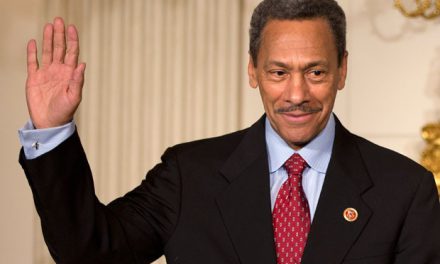first tuesday case in point: Local zoning ordinances may prohibit the legal operation of medical marijuana dispensaries (MMDs)
Should cities be able to ban medical marijuana dispensaries?
- No (55%, 64 Votes)
- Yes (45%, 52 Votes)
Total Voters: 116
Facts: A business operated a medical marijuana dispensary (MMD) in a city where MMDs are prohibited under zoning regulations. The city filed a nuisance complaint against the MMD to have it shut down.
Claim: The city claimed the MMD violated city zoning law since it was by ordinance a nuisance.
Counter claim: The MMD claimed the zoning law prohibiting MMDs was unenforceable since it violates state law protecting MMDs.
Holding: The California Supreme Court held the city may shut down the MMD since state law protecting MMDs does not limit local authority from enforcing exclusionary zoning ordinances. [City of Riverside v. Inland Empire Patients Health and Wellness Center, Inc. (2013) ___ CA4th___]
How time flies
Nearly one year ago, first tuesday reported similar cases where two lower courts came to opposite conclusions on the same issue of MMDs and zoning. As of May 2013, the haze has finally cleared with this California Supreme Court decision concluding local zoning trumps state law, at least when it comes to MMDs.
Related article:
What are the facts?
In California, medical marijuana is excepted from the state’s criminal and nuisance laws, protecting patients from arrest, prosecution or abatement under the Compassionate Use Act of 1996 (CUA) and the Medical Marijuana Program Act (MMPA).
California was the first state to legalize medical marijuana with the CUA, which enabled patients to legally use marijuana with a physician’s approval. In 2003, the MMPA was adopted to protect dispensaries that administer or cultivate marijuana exclusively for medical purposes. However, neither of these laws are able to protect patients from the federal Controlled Substance Act (CSA), which still prohibits the possession, distribution and manufacture of marijuana.
In this case, patient demands were not the direct target of the complaint filed by the city – the MMD supplier was.
Nuisance or not?
According to Riverside’s zoning ordinances, MMDs are classified as public nuisances that may be abated or removed (read: shut down). Public and private nuisances are defined as anything offensive, injurious or obstructive to the quiet use and enjoyment of property. More specifically, a public nuisance (as the MMD was characterized in this case) is a nuisance which affects an entire neighborhood or segment of the public. [See first tuesday Legal Aspects of Real Estate, 5th Ed, Chapter 19: Nuisance: offensive, unhealthful or obstructive]
For instance, consider a homeowner’s residence that is located near a waste treatment plant which emits a noxious smell. The odors produced by the waste facility constitute a nuisance, as the smell affects the homeowner’s right to the quiet enjoyment of their property. [Varjabedian v. City of Madera(1977) 20 C3d 285]
Generally, nuisances have a physical element to them. In the previous example, the noxious odor creates a sensory condition preventing others’ enjoyment of their property. However, fear of intangibles (such as the medicinal use of a substance a neighbor may disapprove of) does not constitute a nuisance. [Koll Irvine Center Property Owners Association v. County of Orange (1994) 24 CA4th 1036]
It is strange that Riverside chose to define an MMD as a public nuisance in the face of the publicly approved legalization of MMDs. Riverside’s city attorney explained that the public had been complaining of increased illegal drug sales, robberies and DUI.
However, facts within the city region where the MMD was located show a very different story. The amount of robberies mirrored citywide robbery rates (dropping in the first three years of the MMD’s existence) and DUIs had a minor uptick. Most revealingly, drug abuse violations dropped by 31% from 2009, when the MMD opened, to 2012.
Did the sale of medicinal marijuana increase the amount of crime and public risk in the fair City of Riverside? No, in fact, it potentially aided in lowering the amount of drug abuse in the area.
For the people… who live somewhere else
The California Supreme Court held that while the CUA and the MMPA were created to take “incremental steps toward freer access to marijuana,” the CUA did not limit local authority. Rather, as long as a state law does not explicitly prohibit a local authority from criminalizing actions or substances recognized as legal by the state, local authorities can choose to penalize freely.
The city took action to please a portion of its constituency and argued that the MMPA was not designed to be a “one-size-fits-all” enactment. Riverside’s zoning ordinances specifically prohibited MMDs within the city and classified them as a public nuisance. Essentially, the city said if enough of the right people are uncomfortable with a legal right exercised within the city, we will zone it out. This is a startling example of brash regionalism thumbing its nose at the majority, to say nothing about a national trend.
After the court’s ruling, the city announced plans to remove all other MMDs within its limits. Neighboring cities with similar zoning restrictions gave similar announcements and many are in the process of closing local MMDs, such as Anaheim to the west and Beaumont to the south.
The Fallout
Users of medical marijuana will likely be able to obtain medical marijuana from MMDs in other locations with less restrictive zoning – or under the table from neighborhood dealers. This reshuffling just funnels money from one municipality into a nearby city or county or worse: off the grid. Economics are not limited by borders and the demand for marijuana shows no signs of shrinking.
The rise in medicinal marijuana in California eased out dealers and pushers who were less able to compete with dispensaries and found their prices dropping. If buyers can price compare, black market dealers can no longer take advantage of consumer’s lack of knowledge and they leave for a better market.
In an effort to control what goes on within their limits, the city may have inadvertently given up their ability to control marijuana use at all. With sanctioned MMDs, the city can regulate and tax the product; however, if users are pressured back into street-corner purchases, the city must invest in cat-and-mouse chases that will do little more than burn up valuable public resources.
Looking forward, it is clear marijuana is here to stay – not just in California, but likely at a national level. Already, nearly half of adults in America claim to have tried marijuana at some point, and even more are in favor of legalizing recreational marijuana. Whether medical marijuana distribution is regulated and profited from, or continued to be penalized in a nebulous legal grey area, is in the hands of state and federal governments.
The state has already voted to decriminalize marijuana and legalize its medicinal use. However, the local governments can decide whether they want to keep it open and taxable – or under-the-table and tax-free and, well, illegal. Modocian Empire thinking as we see it at first tuesday.
Drawing lines in the ever-shifting sand
This case will have a strong impact across California, not just the city of Riverside. Numerous other cases regarding MMDs and zoning are pending before the California Supreme Court, and this case sets the precedent for how they will be handled. Now, the outcome has been decided by the court: local government authority legally preempts the protection that the public gave MMDs.
Related article:
At this point, it appears the local governmental forces, or at least those local forces that control local councils, have aligned against medical marijuana, but popular opinion and grassroots activism for medical marijuana has only grown in tandem.
Open-ended conclusion
While the California Supreme Court did uphold the ordinance to shut down the Riverside MMD by zoning, the court did leave the potential for change. They acknowledged this issue is not fully resolved as a whole. “Nothing prevents future efforts by the Legislature, or by the People, to adopt a different approach,” the case reads.
The court’s secondhand reference to the People’s ability to decide is telling: in this instance, local zoning efforts of the minority have successfully overridden the will of the general public. So until altered by the will of the people, welcome the dealer back to the neighborhood.
What do you think? Should local authorities have the right to shut down MMDs despite state law? Is some thinking about federalism and the constitution driving the emotions involved? Will access to medical marijuana continue to grow or shrink? Share your thoughts in the comments below!




















Clearly a legal dilemma. No question all the undesirable events surrounding these ‘clinics’ are directly due to their existence.
Question: In order to get loan approval, loan officer advised the wife who has bad credit to quit claim on bank loan application. Loan was approved and grand deed was named solely on the husband. The husband passed away. Does California law give the wife any rights to sell the property even though she has already signed the quit claim deed? Fred Castillo, BRE # 01048031, email: Fcastillo719@yahoo.com
the pizza delivery guy and postman, as are newspaper stands, liquor stores and public telephones, are an attractive nuisance and a detriment to the neighborhood…… as are marijuana dispensaries. It may benefit those who are really sick and need it to deal with their illness (like cancer, to help them eat) most of the buyers are casual users The constant use of marijuana is like the constant use of alcohol. Most people chill out, but some are either on their way to a life of crime and incarceration or “just out,” while others go on to be contributing members of society for the good of the whole and are not “addicted” to it. Images of people who have used marijuana all their lives and live their lives addicted to marijuana is not good….they are only fooling themselves.
Fairfax ca was about the first one to open in ca and operated 13 yrs without a hitch!
It was zero nuisance and followed about 80 strict rules set out by Fairfax town / police. It was close to a ballpark little league and would close during games etc. NEVER was there a problem check with Fairfax police to confirm this.
It was shut down as owner of building threatened by feds with loss of his property.
Our wonderful county supervisor Jerry brown’s cousin Hal Brown just passed from pancreatic cancer and used pot for his last days to ease nausea etc.
he would now have to get in traffic on highway 101 and drive to corte madera-the last marin county dispensary to get his meds.
Its a FACT that dispensaries are a nuisance!
To those who don’t like the new ruling banning dispensaries I say : “tough, suck it up!”
as i understand the law in california,marijuana is only allowed for the medical use. than why not sell marijuana as a drug at the local pharmacy like we do any other drugs?
I recall that some of these MMDs were mobile operations bringing the goods to the customer’s home. Is that still going on? If so, how does that create any more of a nuisance than pizza delivery or the mailman.